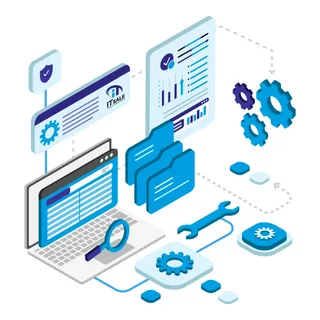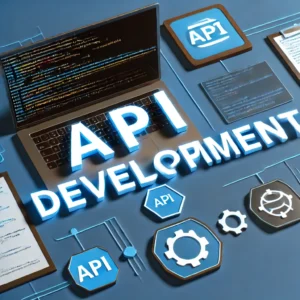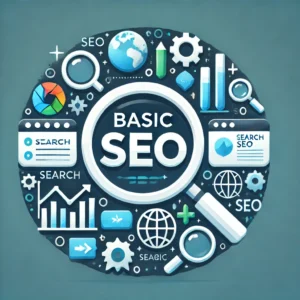Web Solutions For Any Sized Project
Discover the tailored web solutions you need, regardless of project size, with Praksis.dev. Our expertise extends from intricate, large-scale projects to streamlined solutions for smaller endeavours. Whether you’re a startup, a growing enterprise, or an established business, we cater to your unique needs. Trust us to transform your ideas into robust, user-friendly web solutions that exceed expectations. Elevate your online presence with Praksis.dev: where every project, irrespective of its size, receives unparalleled dedication and expertise.


Shaping Web Experiences Without Limits
Ready to elevate your web project? Whether starting small or scaling big, the perfect solution awaits. Get started now and build an online experience that grows with you!!

Foundational Solutions for Small Projects
Small projects benefit from simplicity and cost-effectiveness, with a focus on delivering core content and functionality without the complexity of large-scale solutions. A foundational approach often involves using static site generators like Gatsby, Jekyll, or basic CMS platforms such as WordPress. These solutions enable rapid deployment with minimal resource usage and provide a clean, intuitive design perfect for portfolios, blogs, or small business sites. By relying on lightweight hosting options like GitHub Pages or Netlify, small projects can achieve impressive performance and scalability within a limited budget.

Scalable Solutions for Growing Projects
As projects grow, so do their needs for dynamic content, more complex user interactions, and increased traffic handling. Scalable solutions integrate content management systems (CMS) such as Strapi or Contentful, allowing flexibility in content delivery across devices. This approach often includes cloud hosting providers (AWS, Google Cloud) and database solutions to ensure reliability and performance as user demands grow. These projects benefit from interactive forms, content personalization, and responsive designs that adjust to multiple devices, providing an engaging user experience and supporting evolving business requirements.

Advanced, High-Traffic Solutions for Enterprise Projects
Enterprise-level projects demand sophisticated architectures capable of handling massive data loads and user interactions. These advanced solutions often incorporate microservices architecture, serverless computing, and robust database management to ensure resilience and uptime. Content Delivery Networks (CDNs) and load balancing are essential for efficient data distribution and performance across global locations. Security, data compliance, and AI-driven analytics become vital for managing high traffic and ensuring smooth, secure transactions, making these solutions ideal for large e-commerce sites, social platforms.

Front End
The art of front-end web development
Front-end web development refers to the part of web development that deals with the parts of a website or web application that users directly interact with in their web browsers. This includes designing and implementing the user interface (UI), ensuring that the website is functional, and providing a positive user experience. The focus is on creating an aesthetically appealing and easy-to-use website or web application that meets the needs of the target audience.
Many languages one work
- Languages: Front-end developers use HTML (HyperText Markup Language), CSS (Cascading Style Sheets), and JavaScript to structure, style, and add interactivity to web pages.
- HTML: Provides the structure and content of web pages by organizing text, images, links, and other elements into a cohesive layout.
- CSS: Styles the HTML elements, determining their appearance, layout, colours, fonts, and overall visual presentation.
- JavaScript: Adds interactivity and functionality to web pages, allowing for dynamic content, animations, form validations, and user interactions.
- Frameworks and Libraries: Front-end developers often use frameworks and libraries like React, Angular, Vue.js, or Bootstrap to streamline development, reuse code, and enhance efficiency.
- Responsive Design: Ensures that websites are accessible and displayed correctly on various devices and screen sizes, such as desktops, tablets, and mobile phones.
- Cross-browser Compatibility: Ensuring that the website works consistently across different web browsers like Chrome, Firefox, Safari, and Edge.
Quisque aliquet velit sit amet
Front-end developers focus on creating a visually appealing, user-friendly, and intuitive interface that enables users to navigate the website easily and access its functionalities seamlessly. Collaboration with backend developers is essential to integrate the front-end components with the backend functionalities for a cohesive and fully functional web application.
Back-End
Backend Development
Backend development is a crucial part of web development that deals with the logic and functionalities of a website or web application on the server-side. It involves implementing operations that occur behind-the-scenes, managing data, and ensuring smooth functionality of the website’s front-end or client-side. In other words, it enables the website to function seamlessly by managing everything that happens in the background.
Security and Performance
Server-side Languages: Backend developers use programming languages such as PHP, Python, Ruby, Java, Node.js, and others to write the code that runs on the server.
Database Management: They work with databases (like MySQL, PostgreSQL, MongoDB) to store, retrieve, and manage data efficiently. This includes designing database schemas, querying data, and ensuring data integrity.
Server and Hosting Environment: Backend developers configure and manage the server environment, ensuring the website or application runs effectively. This involves understanding server technologies, deployment, and scalability.
Business Logic and Functionality: They create the logic and algorithms that power the application’s core functionalities, handle user authentication, process forms, manage sessions, and handle data flow between the server and the client.
APIs (Application Programming Interfaces): Backend developers often create APIs that allow different systems or services to communicate with each other, enabling data exchange and integration.
Security and Performance: They implement security measures to protect against vulnerabilities, ensure data encryption, and optimize the application’s performance for better user experience.
Synergizing Frontend and Backend Development: Achieving
Backend Development works hand-in-hand with Frontend Development, which deals with the user interface and interactions in the web browser. Together, these components form the backbone of a fully functional and dynamic web application.
Collaboration between frontend and backend developers is crucial to ensure seamless integration and functionality between what users see and interact with (frontend) and the underlying processes that make everything work (backend).
WordPress Website
WordPress
WordPress is a widely used content management system (CMS) and web publishing platform that powers a significant portion of websites on the internet. It provides a user-friendly interface for creating, managing, and publishing content without requiring extensive technical knowledge.
Open Source
- Open Source: WordPress is open-source software, meaning it’s free to use, and its source code is accessible and modifiable by developers worldwide.
- User-Friendly Interface: It offers an intuitive dashboard that allows users to create and manage various types of content, including blog posts, pages, media, and more.
- Themes and Plugins: WordPress provides a vast library of themes (templates) and plugins (extensions) that allow users to customize the appearance and functionality of their websites. Themes control the design, while plugins add features like contact forms, e-commerce functionality, SEO tools, etc.
- SEO-Friendly: WordPress is known for its SEO-friendly structure, providing features and plugins that assist in optimizing websites for search engines.
- Community and Support: There is a large and active WordPress community, offering forums, documentation, tutorials, and support for users at all levels.
- Scalability: WordPress is scalable and can accommodate websites of various sizes, from small blogs to large enterprise websites.
- Customization: For developers and designers, WordPress allows extensive customization through coding, creating custom themes, plugins, or modifying existing ones to suit specific requirements.
Exploring the Versatility of WordPress: Ideal for Blogs, Portfolios, E-commerce, and Beyond
WordPress is a versatile platform that can be utilized for a variety of websites, including blogs, portfolios, e-commerce sites, business websites, and other related ones. Its flexibility, ease of use, and a robust ecosystem of themes and plugins make it a popular choice for both beginners and experienced users looking to create websites efficiently.
Let’s Build Something
Get In Touch With Us
Building something can be an exciting endeavor. Whether it’s a website, a project, or an application, I’d be happy to assist or provide guidance. However, I’d need more details about what you specifically want to build or create.
If you have a particular project or idea in mind, please share more details about it. This could include the type of project (e.g., website, app), the purpose or goal of the project, any specific features or functionalities you envision, and any technologies or tools you’re considering using.
Feel free to provide more information, and I’ll do my best to offer suggestions, advice, or steps to help you get started or move forward with your project!

praksis@praksis.dev
phone
+905321617804
Adress
Çember sk. No:17/7 Aydınlıkevler_Ankara 06130









